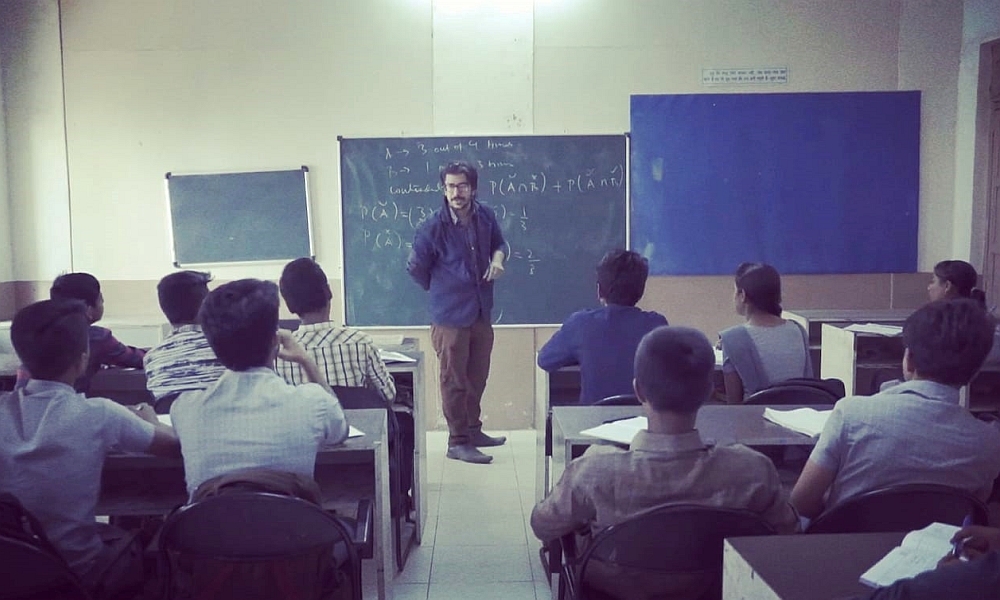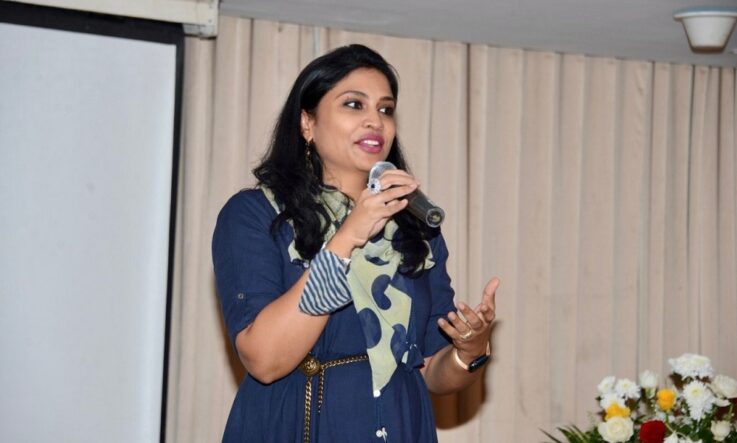The US $1 million Global Teacher Prize has been called the ‘Nobel Prize of Teaching’. Keisha Thorpe is the seventh winner of the annual prize presented by The Varkey Foundation, joining the honour roll alongside educators such as India’s own Ranjitsinh Disale. The 2021 top 50 shortlist was selected from over 8000 nominations and applications from 121 countries around the world and included two teachers flying the flag for India – Meghana Musunuri and Satyam Mishra. Musunuri spoke to Teacher earlier this year to share her strategies for creating a positive learning environment. In today’s article, Satyam Mishra provides practical examples for making mathematics more engaging and relevant for students.
Satyam Mishra is a mathematics teacher at Mount Assisi School in Bhagalpur, Bihar. As a network connector with Teach for All, he has collaborated with schools across the globe, including teaching at the Malala Yousafzai All-Girls School in Lebanon dedicated to Syrian refugee girls.
At Mount Assisi, Mishra prepares secondary school students for the Indian Certificate of Secondary Education (ICSE). The average score of students in phase one of the 2021-22 ICSE board exams has been 97.85 per cent.
Mishra is focused on ensuring that all children get equal educational opportunities.
‘I was born in the same town where I now teach. I have seen communities face educational inequality, crime, and poverty. Education was indeed a privilege where wealthy communities could afford good private schools and the poor with no access to quality education remained deprived of social mobility.
‘Girls’ education has often been neglected in the past, especially in rural and small towns of India. My grandmother who could neither read nor write chose to learn from her seven-year-old grandson at the age of 72.
‘I am particularly interested to improve the educational outcomes of first-generation college goers, children with special educational needs, adult women resuming studies, refugee and tribal children.
‘Today, I teach at a school where 40 per cent of students come from tribal communities.’
Mishra highlighted five strategies that mathematics teachers can fit in to their teaching routines.
1. Debating STEM
Teachers tend to promote debate in English or social science classes but do not associate it with mathematics. There should be equal emphasis, if not more, on debating mathematics.
Debating becomes a critical teaching tool to make students realise that logic takes precedence in learning mathematical concepts. Students will be able to calculate mean and median using the formula, but many won’t be able to identify the actual difference between mean and median.
They may be puzzled when asked to choose between mean and median to calculate the weight of students in a classroom or provide reason for using the cost price as the denominator while calculating profit and loss. They should not follow the teacher blindly and instead try to find out ‘what if’ the selling price was the denominator.
Mathematics and science are essentially based on debate, research, and experiments.
2. Asking ‘why?’
I noticed a Grade 4 student confused about the use of geometry and unitary methods. Why to learn about corresponding angles or alternate angles? He was ready to give up as he couldn’t find the use of these domains in real life.
I went to the class the next day doing my research and hoping to help him. I explained that around 2000 years ago, the mathematician Eratosthenes calculated the entire circumference of the planet Earth using Grade 4 unitary method and Grade 5 geometry.
Although I spent 40 minutes of my ‘syllabus chasing’ time on this, it helped 40 students in my class to understand the real power of mathematics.
3. Visualisation
Many students think that calculus is abstract. This is not true. In fact, right from trajectory to projectiles – all need calculus. Change in area is a concept taught in calculus – ds/dt or change of surface area with respect to time. A ripple is the best example of ds/dt – you see a ripple and estimate the change in area with respect to time. Again, mensuration is a spin-off of calculus.
4. Current affairs and mathematics
Current affairs have constantly changing data. What kind of activities can link current affairs to mathematics? When Prime Minister Modi was visiting the United States of America, I told my students to compare areas of the two countries. They noted that India is one-third the size of USA. Similarly, by comparing the population of both the countries, they derived that USA has one-fourth the population of India. This helped them to understand the use of fractions in the real world.
The idea behind such an exercise is to move beyond textbook activities and understand mathematics in everyday life. Such activities also help to ease fear, reflect on mathematics, and encourage students to explore mathematical problems.
5. Celebrating scientists
We should celebrate the brilliance of scientists and talk about their work. What problem was the great mind investigating and what solution did they find. The Nobel Prize website is an excellent resource for students. I often ask students whose work they find inspiring and why.
Stay tuned: In an upcoming article, Satyam Mishra will pinpoint the teaching strategies for making mathematics accessible and inclusive for all students.
In this article, Satyam Mishra discusses the importance of linking mathematics to everyday life in classroom lessons. With a colleague, or group of colleagues, think about a forthcoming topic you’re going to be teaching. How could you link the learning activities to real life and to your own students’ experiences? Are there specific programs in your school to recognise and address the needs of different groups of learners?
If you’d like to share your own story of a successful initiative to support students and educators at your school, email the Teacher team via teachereditorial@acer.org



